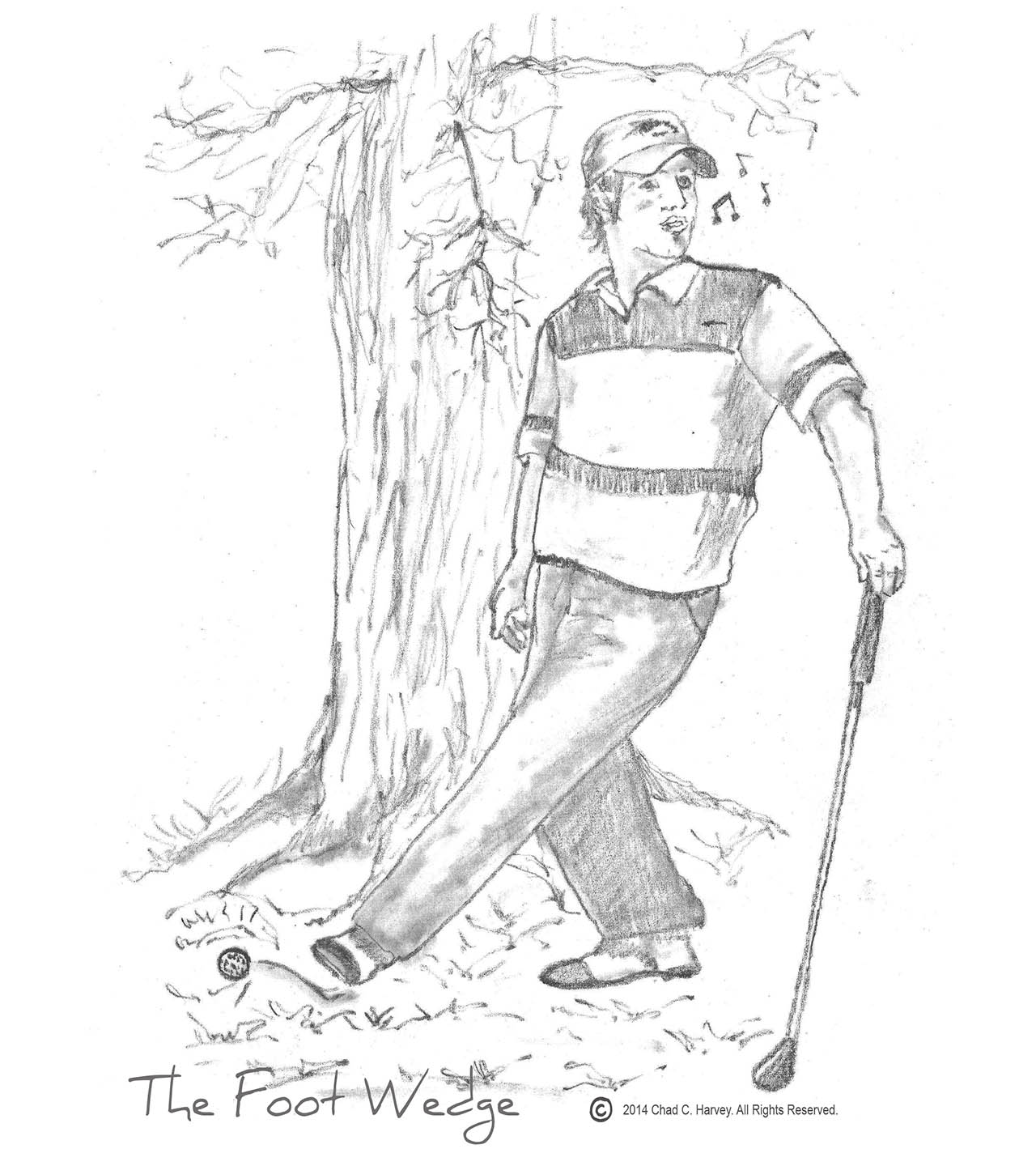Foot Wedging in the Era of Disengagement

The other day I found myself at the local grocery store on a guerrilla shopping expedition. (Important Sidebar: When on these expeditions, I always take pains to “stay on the path” because as I learned from Captain Ron, there’s a world of difference between a gorilla which is native to Equatorial Africa and a guerrilla… but I digress).
As I was departing the store as quickly as possible, I approached the floral department near the exit. Several large flower petals had managed to migrate from there into the main thoroughfare. They presented no apparent hazard, but they were noticeable. Not to fear, though, as a store employee was sauntering up to the offending petals. As I walked toward both the petals (and the exit) the employee turned slightly sideways and with the inside of his foot he lightly kick-scraped the petals in a sweeping motion away from the aisle. And then he did it again. And then a third time. All efforts were equally ineffective. At this point I passed the employee who looked up at me with a slightly befuddled look on his face as if to say “I don’t know why these petals are still here.” And then, without even a backwards glance, I exited the store passing multiple trash bins.
The gentleman scraping his foot sideways was employing a technique surreptitiously used on the golf course since time immemorial – the foot wedge. So, given his choice of technique, we’ll call this employee Wedge (no relation to this guy). Wedge knew that he was expected to remove the petals from the aisle floor but the act of bending over to retrieve them must have seemed too daunting to him. (I’ve never worked in a grocery store, but I would imagine that most retail outlets have a standing order for their employees to remove trash from aisles). Instead of picking the trash up, though, Wedge chose to encourage the petals back into the general vicinity of the floral department – effectively making this someone else’s problem. In doing so, he expended more effort with those three nudges than if he had bent over, picked up the petals and deposited them in the nearby trash bin.
 According to a recent and widely touted study by Dale Carnegie Training and MSW, 71% of all employees are not engaged and a full 26% are actively disengaged. This is our fault as leaders. All too often those of us charged with ensuring that “the job gets done” overlook the symptoms of a lack of engagement (and active disengagement) when we’re confronted with them. So what if a few shortcuts were employed and the foot wedge was used. The job got done, didn’t it? But then we see someone use the foot wedge somewhere outside of our normal work zone. And the soft plunk of that ball sinking into the cup reverberates in your brain like a bag of anvils. So you think to yourself “That would never happen in our company… would it?”
According to a recent and widely touted study by Dale Carnegie Training and MSW, 71% of all employees are not engaged and a full 26% are actively disengaged. This is our fault as leaders. All too often those of us charged with ensuring that “the job gets done” overlook the symptoms of a lack of engagement (and active disengagement) when we’re confronted with them. So what if a few shortcuts were employed and the foot wedge was used. The job got done, didn’t it? But then we see someone use the foot wedge somewhere outside of our normal work zone. And the soft plunk of that ball sinking into the cup reverberates in your brain like a bag of anvils. So you think to yourself “That would never happen in our company… would it?”
If you’re in a position of authority, the responsibility to ensure that employees are engaged is yours. So the next time you see someone use the foot wedge ask yourself: Is this person wedging as the shortest path to finishing the job or because they’re disengaged? The answer to that question is important… and your organization’s culture and effectiveness depends on answering it correctly.
A large number of tools and techniques exist to both monitor and address employee engagement. One of the tools that our organization uses is called Tinypulse, which allows employees to provide direct, anonymous feedback on a variety of issues, recognize noteworthy actions by their colleagues and provide leaders with a better handle on morale and engagement. It’s only effective, though, if leadership is truly open to what employees are experiencing and living within the organization. But Tinypulse is only one example of a tool and I’m sure that the readers of this article have a phenomenal amount of knowledge on this topic that they can share. So, in the spirit of engagement, let’s try a social media experiment.
Please post in the comments some examples of how best to keep employees engaged. This might be something that you’re directly responsible for. Or it might be something you’ve been a part of at a current or past organization. It might even be something that you’ve seen done elsewhere but wished you could be a part of. If enough responses are posted to this article, I’ll follow up with a separate piece that further explores the techniques, methods and tools that progressive leaders and organizations are using to ensure employee engagement.
So, to return from where we began, be sure to always stay on the path. Captain Ron was correct (he always is). There actually are gorillas out there… and they know how to use the foot wedge.
Click here to read or comment on this article on Linkedin.
© 2015 Chad C. Harvey. All Rights Reserved
Image Credit(s): Dale Carnegie Training & Chad C. Harvey
